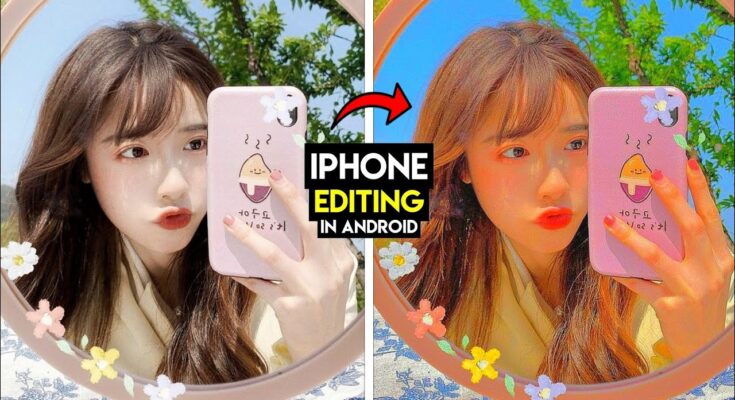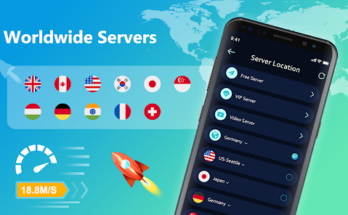In recent years, iPhone photography has become synonymous with high-quality images, thanks to its advanced camera systems and sophisticated photo filters. These filters enhance photos by adding depth, color, and artistic effects, making iPhone-captured images stand out. The popularity of these filters has led Android users to seek ways to replicate the iPhone photo experience on their devices. This demand has given rise to various Android apps and tools that aim to bring iPhone-like photo filters to Android users. In this guide, we will explore what iPhone photo filters on Android are, how they work, their features, pros and cons, alternatives, and provide a final verdict on their effectiveness.
What is an iPhone Photos Filter in Android?
An iPhone photos filter in Android refers to a set of filters or editing tools available on Android devices that aim to replicate the photo effects and enhancements typically associated with iPhone photography. These filters are designed to mimic the color grading, lighting effects, and overall aesthetic that iPhone users can achieve with the native iOS camera app.

These Android filters are often found in photo editing apps or camera apps specifically designed to emulate the look and feel of iPhone photography. By using these filters, Android users can achieve a similar level of photo quality and artistic effects without needing to own an iPhone. This is particularly appealing to those who admire the visual style of iPhone photos but prefer using Android devices.
How Do iPhone Photos Filters in Android Work?
iPhone photo filters in Android work by applying specific algorithms and preset adjustments to the images taken or edited on Android devices. These filters are typically built into photo editing apps or camera apps that offer real-time filter previews, allowing users to see the effect before taking the photo. Here’s a breakdown of how these filters function:
- App Installation: Users download and install a photo editing or camera app that includes iPhone-like filters from the Google Play Store or other sources.
- Image Capture or Selection: Users can either capture a new image using the app’s camera or select an existing photo from their gallery to apply the filter.
- Filter Application: The app provides a range of filters designed to mimic iPhone’s style. Users can apply these filters with a single tap or make further adjustments to brightness, contrast, saturation, and other parameters.
- Real-Time Preview: Many apps offer a real-time preview feature, allowing users to see how the filter will affect the photo before they finalize the edit.
- Customization: Users can fine-tune the filters to better match their preferences, often adjusting elements like warmth, shadows, and highlights to perfect the image.
- Saving and Sharing: Once satisfied with the edited photo, users can save it to their device or share it directly on social media platforms like Instagram, Facebook, or Twitter.
Features of iPhone Photos Filters in Android
iPhone photos filters available on Android devices come with a variety of features that enhance the overall photo editing experience. These features are designed to offer Android users a seamless way to achieve the coveted iPhone photo aesthetic. Below are the key features commonly found in these apps:
- High-Quality Preset Filters: These apps often come with a range of preset filters that closely resemble those found on iPhones, offering similar color grading, contrast, and saturation adjustments.
- Portrait Mode Simulation: Some apps can simulate the iPhone’s portrait mode, which blurs the background to create a depth-of-field effect, highlighting the subject.
- Real-Time Filter Preview: Users can see the effects of filters in real-time before capturing a photo or finalizing an edit, ensuring they get the perfect shot.
- Manual Adjustment Tools: Beyond preset filters, these apps often include manual adjustment tools, allowing users to tweak brightness, contrast, exposure, shadows, and highlights to their liking.
- Custom Filter Creation: Advanced apps allow users to create and save their own custom filters, enabling a personalized editing experience that can be reused across multiple photos.
- HDR Effect: High Dynamic Range (HDR) effect can be applied to photos to enhance the detail in both the highlights and shadows, mimicking the iPhone’s HDR capabilities.
- AI-Powered Enhancements: Some apps use AI to automatically enhance photos by adjusting colors, exposure, and sharpness, making photos look professionally edited with minimal effort.
- Seamless Sharing Options: These apps often include built-in sharing options that allow users to post their edited photos directly to social media platforms or messaging apps.
- Batch Processing: For users who need to edit multiple photos at once, some apps offer batch processing capabilities, applying the same filter or edits to a group of photos simultaneously.
- Ad-Free Experience: Premium versions of these apps often provide an ad-free experience, ensuring that users can edit their photos without interruptions.
Pros of iPhone Photos Filters in Android
| Pros | Description |
|---|---|
| Access to High-Quality Filters | Android users can access high-quality filters that replicate iPhone’s photo aesthetic. |
| Cost-Effective | These apps are often free or low-cost, providing a budget-friendly way to enhance photos. |
| Ease of Use | User-friendly interfaces make it simple to apply filters and make adjustments. |
| Customization Options | Users can fine-tune filters and create custom presets for personalized editing. |
| Real-Time Preview | Real-time preview of filters ensures that users can see the effect before finalizing the photo. |
| Social Media Integration | Seamless sharing options allow users to post their edited photos directly to social media platforms. |
| Simulation of iPhone Features | Apps can simulate popular iPhone features like portrait mode and HDR effects. |
| No Need for an iPhone | Android users can achieve the iPhone photo look without switching devices. |
| Regular Updates | Many apps receive regular updates, introducing new filters and features to keep up with trends. |
| Offline Editing | Users can edit photos without needing an internet connection, providing flexibility in various environments. |
Cons of iPhone Photos Filters in Android
| Cons | Description |
|---|---|
| Inconsistent Quality | Some filters may not perfectly replicate iPhone filters, leading to varying results. |
| Performance Issues | High-performance filters can slow down older or less powerful Android devices. |
| Limited Free Features | Many apps lock advanced features and filters behind a paywall. |
| Ads in Free Versions | Free versions of these apps often contain ads that can interrupt the editing process. |
| Compatibility Issues | Not all Android devices are compatible with every app, especially older models. |
| Storage Consumption | High-quality filters and edited photos can take up significant storage space. |
| Learning Curve | Users new to photo editing may find the array of features and adjustments overwhelming. |
| Privacy Concerns | Some apps may require extensive permissions, raising privacy and security concerns. |
| Potential for Over-Editing | The wide range of editing tools can lead to over-editing, making photos look unnatural. |
| No True Apple Integration | While these apps mimic iPhone filters, they don’t offer the full integration and seamless experience of an iPhone. |
iPhone Photos Filters in Android Alternatives
| Alternative | Description | Platform |
|---|---|---|
| VSCO | Popular photo editing app with filters inspired by analog film, offering a similar aesthetic to iPhone filters. | Android, iOS |
| Snapseed | Google’s powerful photo editing app with professional-grade tools and filters. | Android, iOS |
| Adobe Lightroom | Comprehensive photo editing app with advanced features and presets, including mobile-optimized iPhone-like filters. | Android, iOS |
| Afterlight | Easy-to-use editing app with high-quality filters and textures, mimicking iPhone photo effects. | Android, iOS |
| Prisma | Transform photos into artworks using AI-powered filters, offering a unique take on iPhone-like photo enhancements. | Android, iOS |
| Polarr | Advanced photo editor with a variety of filters and tools that can replicate iPhone’s photo style. | Android, iOS |
| PicsArt | Feature-rich photo editor with a wide range of filters, effects, and editing tools. | Android, iOS |
| Fotor | All-in-one photo editing and collage-making app with filters that can emulate iPhone photos. | Android, iOS, Online |
| Pixlr | Free and intuitive photo editor with a wide array of filters and effects for creating iPhone-like images. | Android, iOS, Online |
| Facetune | Popular app for portrait editing with filters that can create a smooth, polished look similar to iPhone photos. | Android, iOS |
Conclusion and Verdict
The allure of iPhone photography is undeniable, with its sharp images, vibrant colors, and sophisticated filters. For Android users, the ability to replicate this experience on their devices is highly appealing. iPhone photo filters on Android provide a practical solution for achieving similar aesthetic results without the need to switch to an iPhone. These filters, available through various apps, offer a wide range of features, from basic color adjustments to advanced portrait mode simulations.
However, while these apps do a commendable job of emulating the iPhone photo experience, they are not without their drawbacks. Inconsistent filter quality, potential performance issues, and the presence of ads in free versions are some of the challenges users may face. Additionally, the lack of true Apple integration means that Android users might miss out on the seamless, holistic experience that iPhone users enjoy.
In conclusion, iPhone photo filters on Android offer a viable alternative for those who admire the iPhone’s photographic capabilities but prefer using Android devices. With the right app, Android users can achieve stunning photos that closely resemble the quality and style of iPhone photography. However, users should carefully consider the pros and cons and explore alternative apps to find the best fit for their needs.
FAQs: iPhone Photos Filters in Android
Q: Can I achieve the same photo quality as an iPhone using filters on Android? A: While iPhone filters on Android can closely replicate the iPhone’s style, achieving the exact same quality depends on various factors, including your Android device’s camera capabilities and the specific app used.
Q: Are these apps free to use? A: Many iPhone-like filter apps on Android are free to download, but they often include in-app purchases or subscriptions for advanced features and to remove ads.
Q: Will applying iPhone-like filters slow down my Android device? A: High-quality filters and real-time processing can be resource-intensive, potentially slowing down older or less powerful Android devices.
Q: Do these apps work on all Android devices? A: Most apps are compatible with a wide range of Android devices, but performance and compatibility can vary, especially with older models.
Q: Can I create custom filters with these apps? A: Yes, many apps allow users to create and save custom filters, offering greater flexibility and personalization in photo editing.
Q: Is there a risk of over-editing when using these filters? A: Yes, with the extensive editing tools available, it’s possible to over-edit photos, making them look unnatural. It’s important to use filters and adjustments judiciously.
Q: Are there any privacy concerns with these apps? A: Some apps may request extensive permissions, including access to your photos, camera, and storage. Always review app permissions and privacy policies before installing.
Q: How do these filters compare to professional photo editing software? A: While iPhone-like filters on Android offer impressive results for casual editing, they may not match the precision and depth of professional photo editing software like Adobe Photoshop or Lightroom.
Q: Can I share edited photos directly from these apps? A: Yes, most of these apps include built-in sharing options that allow you to post your edited photos directly to social media platforms or send them via messaging apps.
Q: What should I do if an app doesn’t perform well on my device? A: If an app doesn’t perform well, consider trying alternative apps or updating your device’s software. You can also reach out to the app’s support team for troubleshooting assistance.



